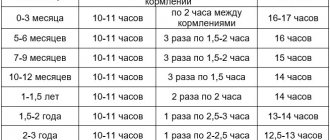If you decide to take up drawing with your baby, remember that in the first years of life a little person actively learns and discovers the world around him. And drawing for him is also a kind of game, an experiment, a way of realizing his childhood fantasies.
After all, you can play not only with cubes and dolls. You can invent and draw interesting stories on paper, make paper clothes, beds and furniture for the same paper dolls, draw road maps for toy travel, etc.
Show your child as many ways of drawing as possible, and soon you will notice manifestations of his own imagination.
The benefits of drawing for children
Many parents have heard about the benefits of drawing.
Drawing for children 4, 5, 6 years old helps:
- stimulate fine motor skills;
- develop speech;
- correctly formulate thoughts and put them into sentences;
- express yourself;
- assert oneself;
- develop a creative approach;
- develop attentiveness, perseverance, and hard work.
Among other things, drawing can:
- give positive emotions;
- strengthen memorization of material;
- signal to parents about the child’s complexes and problems;
- overcome the fear of starting work from scratch;
- lay the foundations of aesthetic perception.
You can get a lot of benefits from drawing if you do it correctly. The main thing is not to overdo it and not discourage the child from wanting to draw anything at all.
HEDU Online School
Website : https://irs.academy Phone Cost : independent access - 390 rubles, with support - 5800 rubles.
Online calligraphy course for children Duration: 2 months. Number of lessons: 8 lessons.
After completing a calligraphy course, a child will learn to draw beautiful inscriptions, sign envelopes and postcards, will be able to start his own blog and show his work, and will also acquire creative thinking, become more disciplined and creative.
Classes are held in webinar format. Each lesson includes practical homework with testing and feedback. Upon completion of the training you will receive a certificate.
What to buy a child for drawing
The key to good drawing lessons is proper preparation of the process. Children don’t like to wait, and if a creative impulse happens, you need to be 100% ready:
- Paper. Take A3 sheets. Children aged 4-6 are just developing their eye and, carried away by drawing the head of the animal, forget to leave room for the body.
- A simple pencil. Children use it to create basic outlines. Take the one marked HB, it does not crumble and is not too greasy.
- Eraser. This is an indispensable thing for erasing unnecessary borders and lines. You can buy it, or you can make it exclusive using special plasticine. For one thing, remember classes in plasticine modeling, which is good for variety of activities.
- Colored pencils and markers. The wider their palette, the happier the child.
- Sharpener. Don't skimp, buy a good, professional one. This way the baby won’t be angry that she doesn’t sharpen, breaks the rod, etc., but will be happy to draw.
- Wax crayons. They are good for painting over contours.
- Paints. If the child is 4-5 years old, this is gouache. At 6 years old, you can give your child watercolors. These paints are transparent and vibrant, but require certain skills.
- Brushes. Choose large (for the background), medium (for wide lines) and small (for drawing outlines). Select the diameter of the shaft to be the same as that of a writing pen - the child’s fingers will begin to prepare for writing letters and numbers.
- Jar for water. You can use a regular glass or buy a special one.
- Palette. Your child will definitely need to mix colors.
- Colored crayons. Who knows, maybe inspiration will strike a child while out for a walk?
- Soap and towel. No matter how neat a child is, if he works with paints, his arms will be covered up to his elbows, his cheeks, and his nose. Believe me.
When everything is purchased, pay close attention to the child’s creative corner:
- Lighting. The place for drawing should be well lit - no one needs vision problems at such a young age.
- Availability. The child must get all art supplies without getting up from the chair.
- Practicality. Make sure that all surfaces are easy to clean and that the child is able to clean up after himself.
When everything is ready, you can start working!
Development methods
Now it is possible to select many successful, tested scenarios aimed at accelerating early development. Many parents ignore such methods, explaining that the child will study in the garden and there is no need to burden him at home.
In fact, any knowledge is useful for a child, especially if it is obtained unobtrusively during play.
The essence of early learning is to create conditions that would facilitate the most effective acquisition of knowledge and skills.
- proper organization of the development environment. provision of gaming aids, educational cards, educational games.
- acquaintance with musical, artistic, literary works, creative activity.
- active communication with the child of all family members, activation of speech by the parents pronouncing their own actions.
- a patient attitude towards behavior, the ability to suppress anger and calmly tell the child where he is wrong.
Maria Montessori Method
Aimed at developing independence. The adult’s task is to ensure the availability of a resourceful development environment and act as an assistant, but not a teacher.
When planning activities, you need to consider what your child likes and what he doesn’t. It is necessary to encourage the natural craving for knowledge of the world, since everything around serves the purpose of learning.
Following this technique, one cannot form a value judgment in relation to the child’s actions, condemn or encourage children.
Despite the apparent permissiveness, the system explains to the child the rules of behavior in society and teaches respect for others.
Children raised using this method are self-confident, able to independently solve everyday problems and take responsibility for their actions. Read more…
Nikitin's technique
The couple were opponents of strollers, playpens and other devices that limit the experimental nature of the child; they called them prisons.
In raising children, they abandoned classes and developmental exercises. The little ones could do what was most interesting to them without restrictions (watching cartoons does not mean).
Particular attention is paid to physical education and hardening. Parents must provide their child with sports equipment: equipment, exercise equipment, equipment.
If abilities are not developed in time, they will not reach the required level. There will be a decline in the child’s ability to develop effectively as he grows up.
The level of development of a child at 3 years old largely depends on the parents. If they want to raise a smart, inquisitive, diligent child, they need to do more.
How to teach a child to draw trees step by step
A tree is the simplest drawing that a child can be taught to draw even at 4 years old, using a step-by-step diagram as a basis. The baby is already familiar with the depiction of trees using straight lines and geometric shapes. Let's complicate the problem and add realism to the tree. Here's how we'll draw a deciduous tree:
- Draw a tubercle, a circle above it and connect the two objects with straight lines (this is the trunk).
- Draw a smile on the circle that goes through the top points of the straight lines. Draw branches to it.
- Make the edge of the crown uneven, highlight the places where the branches enter, draw the trunk and grass on the tubercle. The tree is ready!
Using the same principle - from simple schematic outlines to the desired contours - draw a spruce and birch tree, as shown in the following pictures.
Conveniently, the trunk and branches can be drawn with a pencil, and the child is free to create the crown as he wishes. Fingerprints, brush pressure, pencil strokes. In any case, the tree will turn out to be alive and real.
Online gouache school Art Wave School
Website : https://vangogh.artwaveschool.com Phone Cost : from 4860 rub.
Basic course Transformational painting named after. Van Gogh
The course can be taken by children from 10 years old. There will be exciting tasks and useful exercises + personal support from teachers. You will learn basic techniques for quick painting and right-hemisphere drawing, which will allow you to create spectacular landscapes in a short time. During your training you will write 14 different stories.
The release of lessons was not regulated; after payment, you immediately get access to your personal account, where all the lessons are already available. New course lessons will open as you complete current assignments. Masters check each student’s homework personally and give feedback on it within 24 hours.
How to teach a child to draw animals step by step
For drawing animals with children 4-6 years old, use the same method. Draw the frame using geometric shapes and give it a shape.
Let's look at this point using the example of man's best friend - a dog:
- Draw a circle and an irregular oval - this is the head and body of the dog.
- Connect two roundnesses with smooth lines - this is the neck.
- Add a muzzle and tail.
- Draw the ear and paws.
- We paint over the ear, draw the nose, eyes and tongue, add the outline of the second pair of paws, erase unnecessary borders - the dog is ready to guard the yard!
The yard can be drawn around the dog later. Add a house, a booth, a fence - and the plot drawing is ready!
Using the dog principle, try to depict:
- kitten;
- duck;
- horse;
- pig.
If your child wants a running horse, simply lift the front of the body higher when drawing and “bend” the horse’s front legs at the knee, allowing the mane and tail to flutter in the wind.
How to develop a child at 3 years old
Physical development
To increase endurance, improve dexterity and coordination of movements, physical development activities should be carried out daily. Here are the main ones:
- outdoor games with simple rules; overcoming an obstacle course; sports competitions with small prizes;
- jumping on two legs; on one leg, jumping from small hills; jumping over a line drawn on the floor;
- dancing; children's aerobics; fitness; exercises accompanied by music, poetry or a children's sports program;
- riding a bicycle, running bike, scooter;
- swimming;
- visiting the playground, exercises on the sports wall (crossbar, rope, ladder, rings, monkey bars.
How to teach a child to draw a person step by step
One of the first desires of a child is to draw a picture of mom, dad and himself. At first these are stick men, but this option will not suit a 4-year-old child, and an angular man ceases to seem like a good drawing already at 5 years old. And the child also wants a person to do something on paper.
Let's try to draw a boy about to play chess:
- Draw the frame of the man. Mark the oval of the head, the inverted trapezoid of the torso, the sticks of the arms and legs, and the parallelepiped of the chessboard.
- Based on the frame, draw clothes, face, hands, add volume to the board, draw shoes.
- Draw the details: hairstyle, cuffs, collars, ties - whatever you see fit. Don't forget about the squares on the chessboard.
- Shade the cells in a checkerboard pattern, erase the extra lines - the person is ready for coloring.
If a child is seriously interested in drawing people and what you offer him does not suit him due to disproportionateness, show the little artist the following diagram:
Here are the proportions of people of different ages; a child may be interested in this, and he will try to draw a real proportionate person. This information is relevant for children 6 years old.
Choosing pencils and markers
So, short and triangular pencils will teach your baby to hold them correctly.
In addition, the first pencils for drawing should be very soft so that they can leave a mark on the paper without strong pressure. These can be wax and plastic pencils, water-based pencils. They are easily sharpened with ordinary sharpeners, leave soft and even strokes, and the designs are rich and bright. Such pencils do not stain your hands, are easily washed off clothes, and have no odor.
And of course, your baby can easily draw with felt-tip pens. Now on sale there are harmless markers with ink based on food coloring. They also sell felt-tip pens that can be easily washed off your hands and clothes.
Autumn landscape - step-by-step drawing for children
The easiest way for 4-5 year old children to paint is to create a landscape.
Let's take autumn - it is the most colorful:
- Using blue, blue and white paints, paint the sky. Let it be brighter towards the top of the sheet, and pale closer to the middle.
- Add a palette of orange, yellow, brown and a drop of green paint. Draw a mound under the sky and paint with strokes from the selected palette. You only need a little green, it’s autumn.
- Use brown paint for regular wood and white if your child wants a birch tree. Draw the trunk and branches. We chose a regular deciduous tree.
- Add a palette of yellow, red, orange colors and a drop of green. And then we draw the leaves using the technique that the baby likes. You can use fingerprints, brush marks, you can use a small sponge or a stamp made from folded paper in a hurry. Any method will give an excellent result, the main thing is that there are a lot of leaves and all of them are colorful.
- Here's how this landscape turns out for different children:
Tips for teaching children to draw
- Don't force a 4 year old child to draw. If he doesn’t want to, replace drawing with finger games for children 3-4 years old. Bored? Try to switch his attention to educational games for children 3-4 years old. For him, drawing can be a completed stage, and he self-realizes through other activities.
- If a child at 5-6 years old is completely “showy”, distract him from his favorite activity with educational games for children 5 years old or introduce elements of such games into his gatherings with the album. The baby must develop harmoniously.
- Talk to your child about his drawings. A simple “wow, beautiful” is not enough. Ask what is happening in the picture, why everything is this way and not otherwise - the baby will appreciate your attention.
- Do not compare your child’s work with one example. The sun can be depicted in a hundred different ways. Don’t instill in your child the complex that he won’t succeed this way; encourage the individuality of his work.
- Keep your child's work. And he will be pleased, and in your old age you will have something to look at and remember.
School of creativity Kreativity
Website : https://kreativity.ru Phone Cost : from 1000 rubles/course
The lessons go like this: you watch the lesson, complete the task, photograph the drawing and send it for testing. The teacher sees your work and comments on it: praises you for your success and suggests how you can do your work even better.
Classes are held in subscription mode. Children from 5 to 13 years old study with their parents or independently.
Courses:
- Watercolor for children, 19 lessons
- Creativity lessons, 19 lessons
- Drawing using collage technique, 5 lessons
- Fluffy cards, 16 lessons
- Furry Zoo, 23 lessons
- Furry entomology, 5 lessons
- Felting for kids, 15 lessons
- Soft toy, 12 lessons
- ABC's of crochet, 22 lessons
- Layout, 18 lessons










